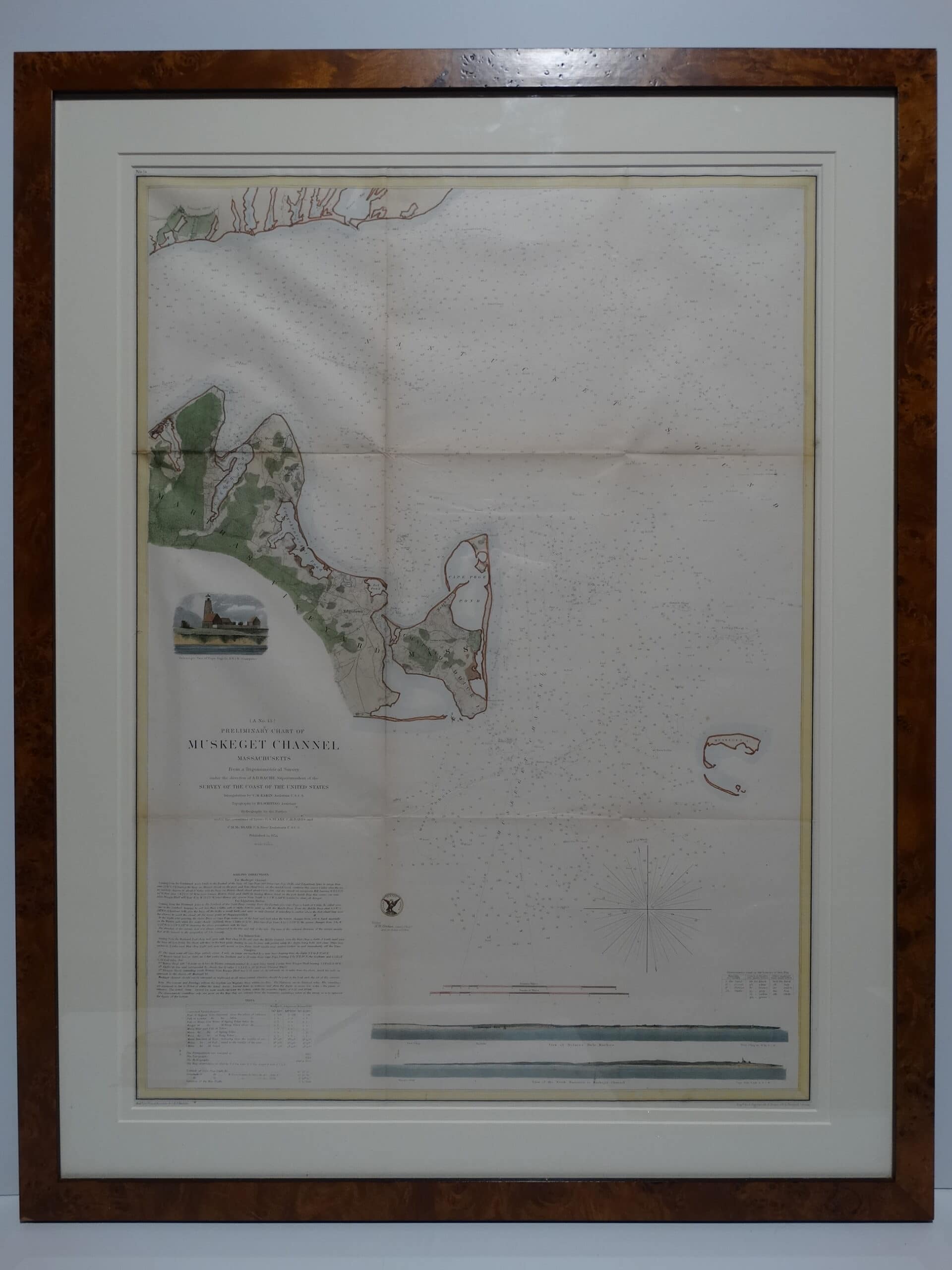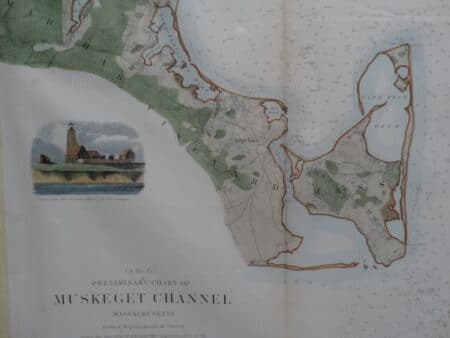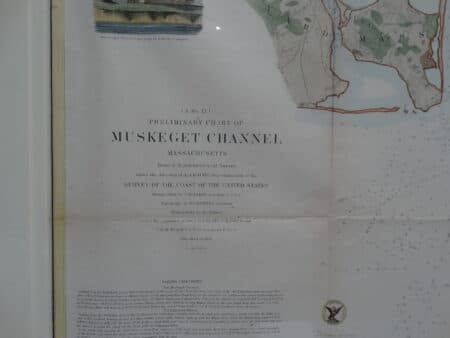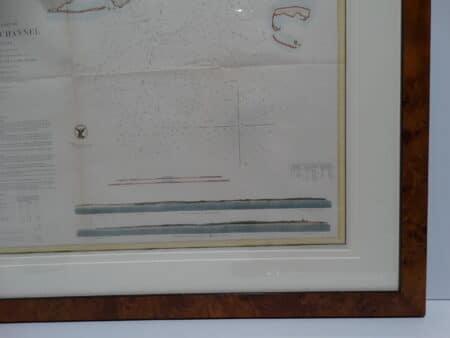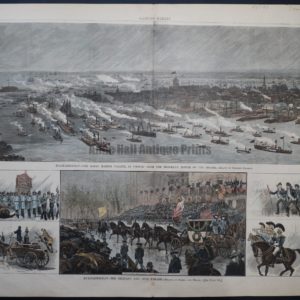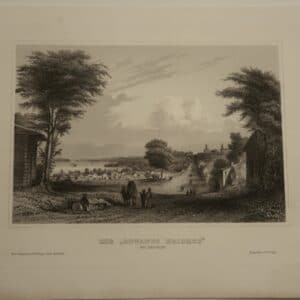Description
1854 Marthas Vineyard Coastal Chart is a detailed steel plate engraving. In detail are Cape Poge lighthouse, Edgartown & Falmouth Village. Burlwood frame.
1854 Marthas Vineyard Coastal Chart Framed
1854 Marthas Vineyard Coastal Chart is a detailed steel plate engraving. The water coloring has been professionally added, applied by hand. A historic Boston 1854 Coastal Chart of Massachusetts, complete with fold lines as issued. Folded into a book of 19th century American coastal charts & surveys. The surveys were published for the US Government. Congress could refer to the maps when discussing American ports and coastlines.
The historic chart is in a burlwood frame is flat with black sides. The frame is solid wood and has a satin finish, the burl wood is first class. Anne selected the molding personally. Double rag matting & UV glass complete the professional archival frame job. The framed piece measures 28 wide x 25″ high. Ready to decorate with, it is ready to hang. Speak with Anne at 413-245-4197 to discuss this rare 19th century Chappaquiddick Map from 1854.
Marthas Vineyard Chappaquiddick Chart is in excellent condition. Cape Poge Lighthouse Marthas Vineyard is featured in this early American map from 1854. There are additional landscape profiles shown in detail in the lower right. Every street in Edgartown is shown.
See all of our Historic Boston & Massachusetts material:
https://annehallantiqueprints.com/product/historic-boston-harbor-chart-framed/
Professor AD Bache research on Superintendents & the US Coastal Surveys
Coast Survey superintendents prepared a report each year, showing the progress of the survey. While the full reports were over 200 pages, Bache’s summary statements for 1861, 1862, 1863, and 1864, gave a sense of Coast Survey’s involvement in the war effort. Bache suffered a debilitating illness in 1865, so the 1865 summary was prepared by an assistant.
Alexander Bache was born in Philadelphia, the son of Richard Bache, Jr., and Sophia Burrell Dallas, nephew of George M. Dallas, and great-grandson of Benjamin Franklin. After graduating from the United States Military Academy at West Point in 1825, he acted as assistant professor there for some time. As a lieutenant in the United States Army Corps of Engineers, he was engaged for a short time in the erection of coastal fortifications, including Fort Adams in Newport, Rhode Island. Bache resigned from the Army on June 1, 1829.
Bache spent the years 1836 to 1838 in Europe on behalf of the trustees of what became Girard College in 1848. Abroad, he examined European systems of education and, on his return, published a valuable report. From 1839 to 1842, he served as the first president of Central High School of Philadelphia, one of the oldest public high schools in the United States. He occupied the post of professor of natural philosophy and chemistry at the University of Pennsylvania from 1828 to 1841 and again from 1842 to 1843.
He married Nancy Clark Fowler on September 30, 1838 at Newport, Rhode Island. She was born in Newport, Rhode Island, and died on January 13, 1870 in Philadelphia, Pennsylvania. She was his associate in the preparation of much of his published material.
They were the parents of one son, Henry Wood Bache, born in 1839 and died on November 7, 1878 at Bristol, Long Island, New York.
In 1843, on the death of Ferdinand Rudolph Hassler, Bache was appointed superintendent of the United States Coast Survey. He convinced the United States Congress of the value of this work and by means of the liberal aid it granted, he completed the mapping out of the whole coast by a skillful division of labor and the erection of numerous observing stations. In addition, magnetic and meteorological data was collected. Bache served has head of the Coast Survey for 24 years until his death in 1867.
He was elected an Associate Fellow of the American Academy of Arts and Sciences in 1845.[1] He was elected a Fellow of the Royal Society of Edinburgh on 15 March 1858,[2] and a Foreign Member of the Royal Society on 24 May 1860.
After the Civil War, Bache was elected a 3rd Class Companion of the Military Order of the Loyal Legion of the United States (MOLLUS) in consideration of his contributions to the war effort.
He died at Newport, Rhode Island and was buried in the Congressional Cemetery in Washington, DC, where a monument was built by American architect Henry Hobson Richardson.

